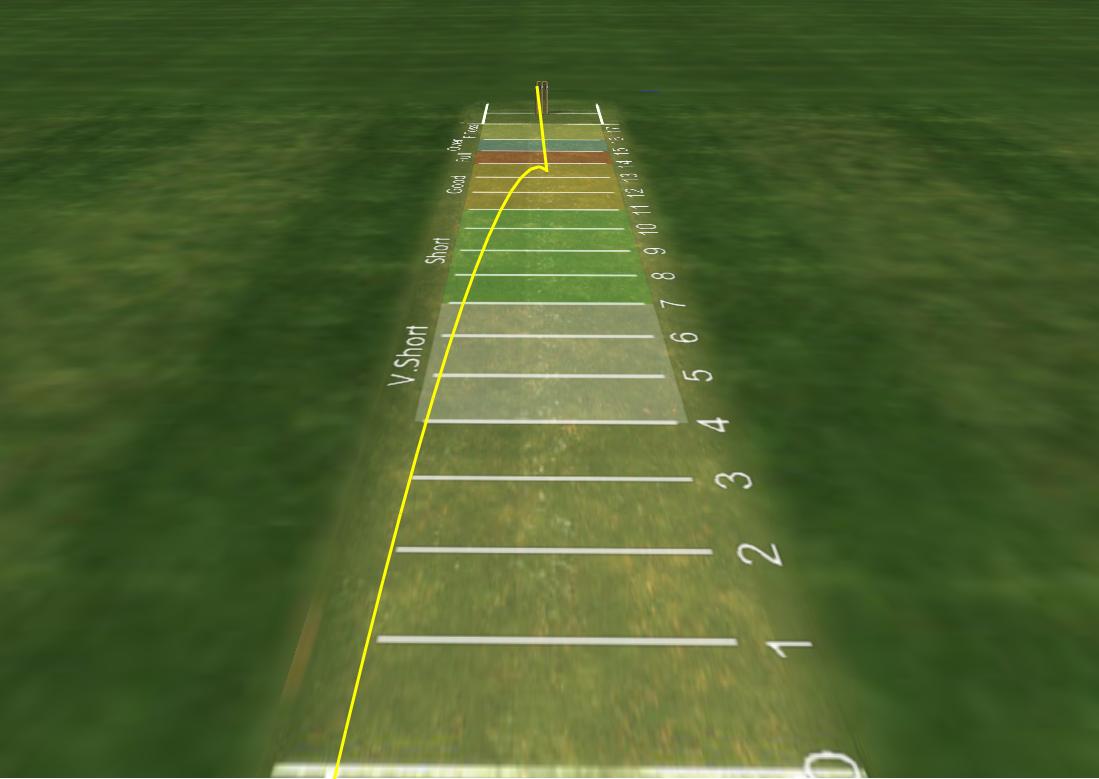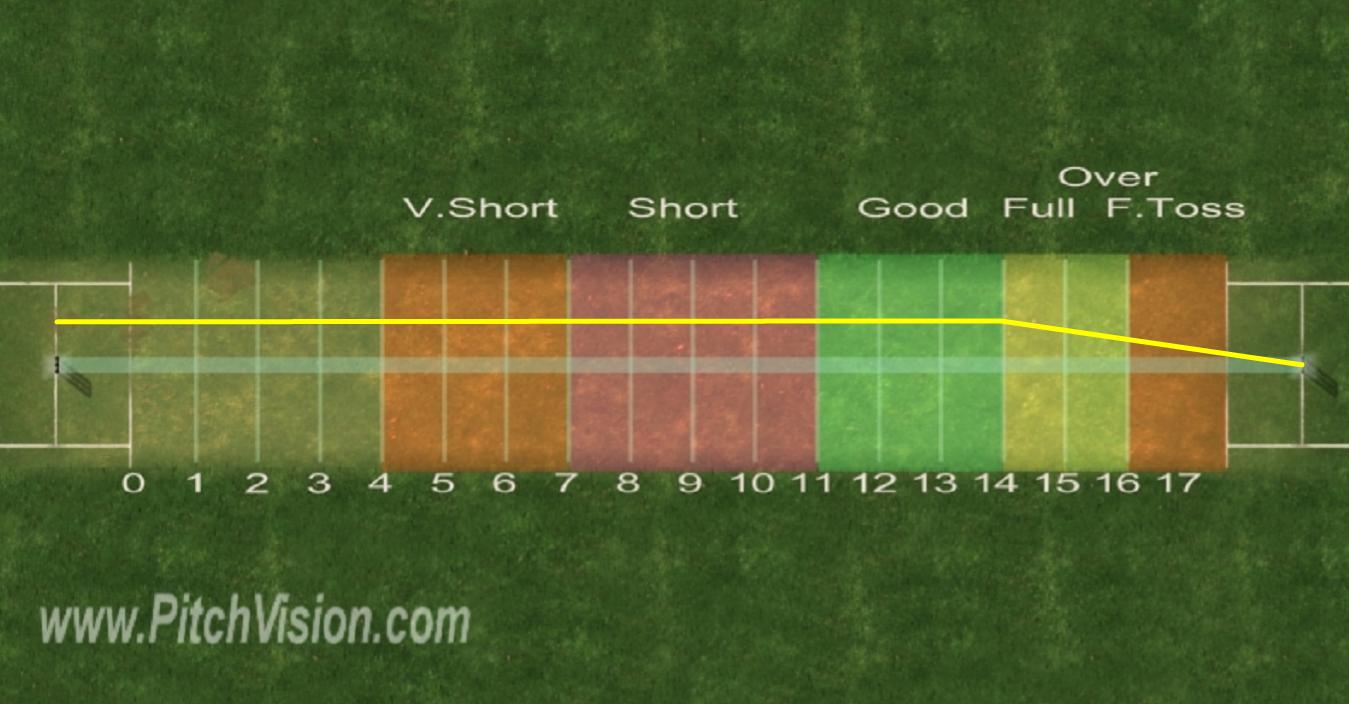|
This article is part of the 'Classic bowling dismissals' series. To go to the start, click here.
Even after the great Shane Warne's legacy, leg spin has a mixed reputation.
Underappreciated by captains and disrespected by slogging batsmen, the wrist spinner has a mountain to climb to even get on. When he or she does get to the crease they are the most destructive of bowlers. With an arsenal of variations they can turn the ball in both directions on even unhelpful wickets.
But everything starts with the leg-break.
Leg break
Like the left arm spinner, the stock ball of the leggie drifts in the air towards the right handed batsman, pitches and turns away:
This delivery brings in bowled, LBW and caught behind. However, not all leg spinners turn the ball the same way. Some bowl flatter with more accuracy while others throw the ball up with more loop and spin.
This means that even the 'stock' leg break will vary a great deal between leg spinners. As a result they will get their wickets with the leg break in other ways. A loopier bowler might need more boundary protection but also will see more balls hit up square inside the ring. A flatter bowler will see more catches taken on the drive.

The line of this delivery is middle to middle and off, turning away to hit the off stump. The bigger spinners of the ball on turning wickets will need to adjust their line more leg side to still be hitting the off stump after it turns. However, it would be impossible for a club leggie to emulate Shane Warne's 'ball of the century' as it will just end up turning less and being worked away on the leg side for easy runs.
Googly or Wrong 'Un
Better club wrist spinners stand out because the can bowl the googly: The ball that goes the other way, turning in to the right handed batsman:

This ball causes great confusion in the batsman. The best method is to bowl a series of leg breaks, ideally dragging the batsman wider to the off side where he feels he can leave the ball outside off stump. The googly is then bowled, turning back and hitting the stumps or getting an edge.
The googly can also cause a problem to the bowler as he will require extra protection behind square on the leg side as the ball is more likely to go there. Filling that gap leaves another one elsewhere so the spinner's line has to be very good.
Top Spinner
Many club leg spinners use this ball as their stock delivery. It's similar to the leg break but has more loop and bounce while spinning less. It's much easier to control and if it turns even half a bat's width it can get the edge.
If it is used as a stock ball the key is to vary the flight, angle and pace on the ball in a similar way to a finger spinner.
It can also be used as a variation from the leg break, the less turn and greater bounce is designed to surprise the batsman and send them off caught behind or at slip.
Left handers
Bowling leg spin to left handers is trickier because the leg break becomes the equivalent of an inaccurate off spinner. The solution is to bowl mostly googlies and top spinners at the off stump. Combine this with a packed off side field.
The other option is to behave as an off spin bowler with more men on the leg side and attacking the stumps. This requires more accurate bowling than any other tactic. The dismissals will be the same as an off spinner to a right hander.
image credit: Chris KWM
Discuss this article with other subscribers
|

.jpg)




.jpg)


